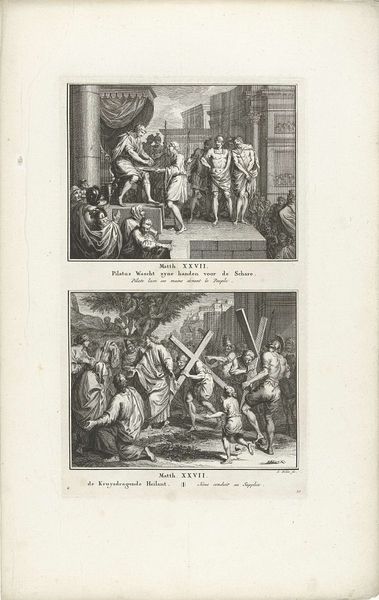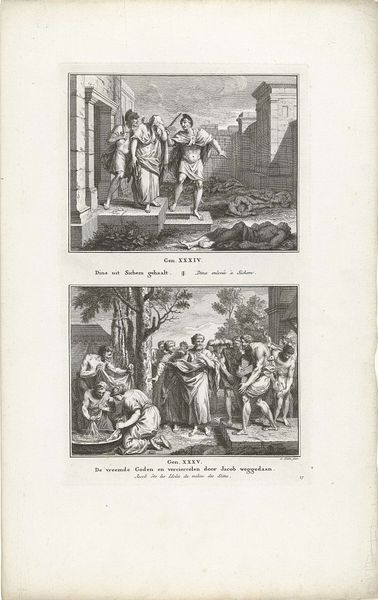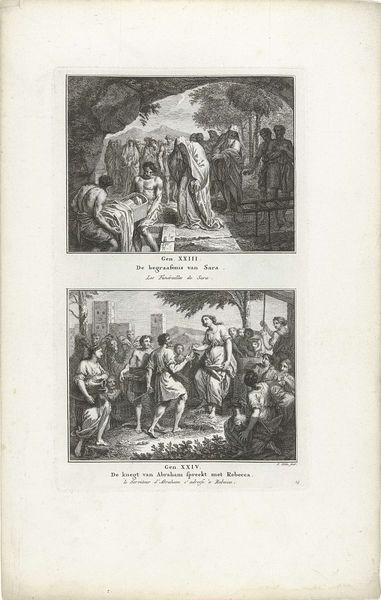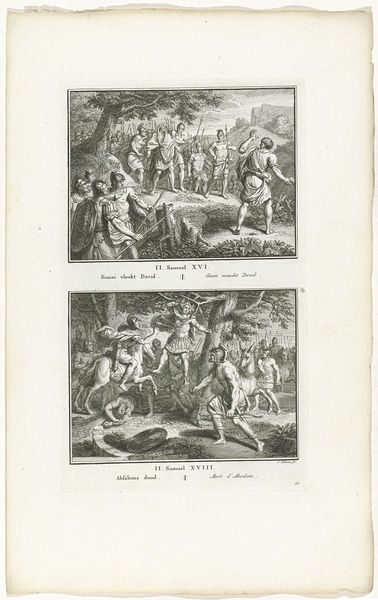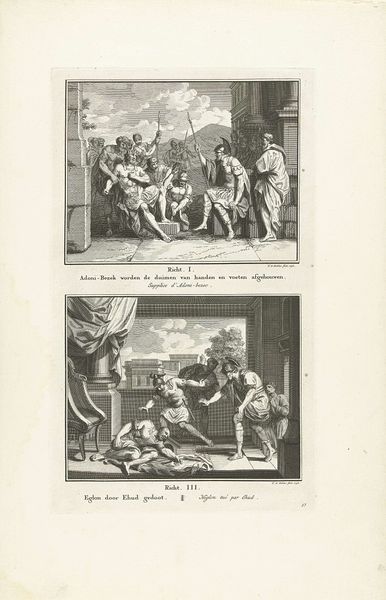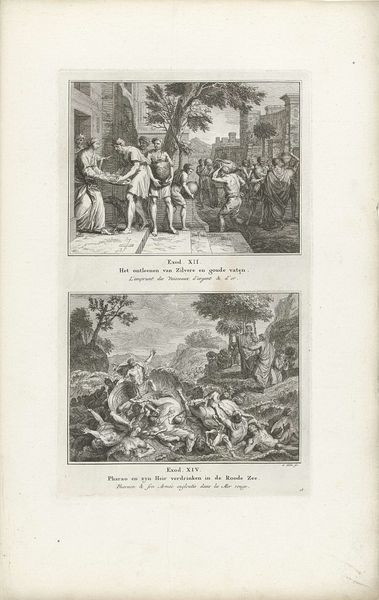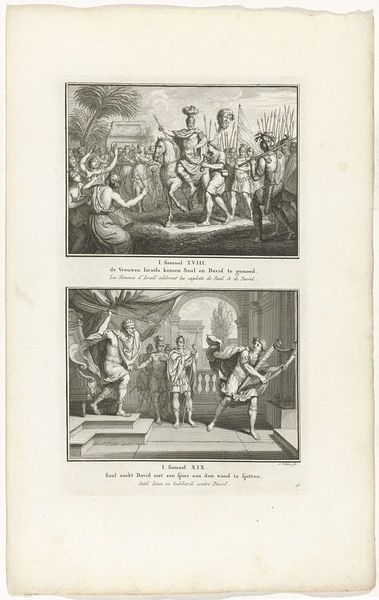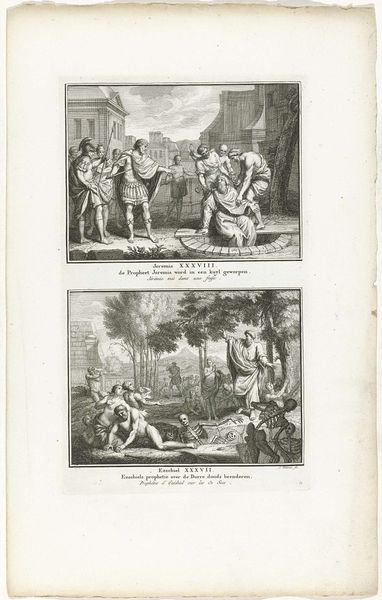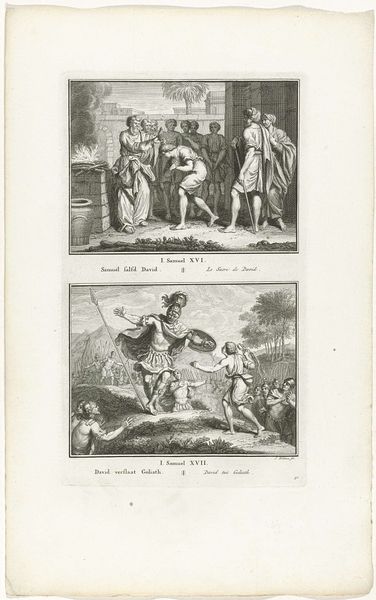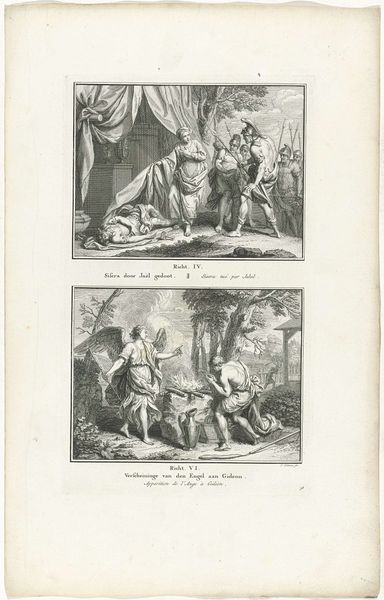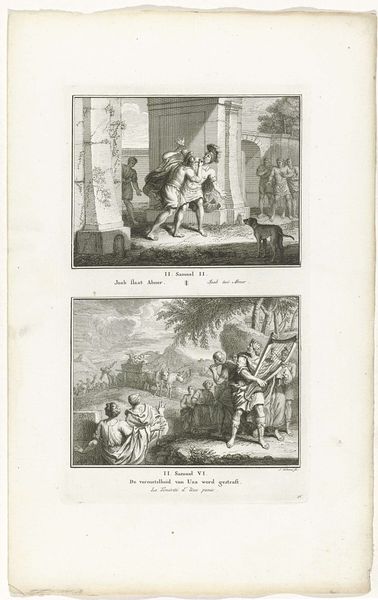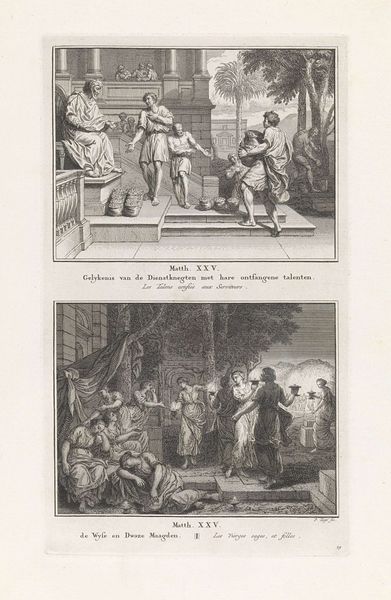
Naäman wordt genezen van lepra en Izebel wordt uit het venster gegooid 1791
0:00
0:00
Dimensions: height 328 mm, width 193 mm
Copyright: Rijks Museum: Open Domain
Editor: This is a 1791 print by Jacob Folkema, titled "Naäman wordt genezen van lepra en Izebel wordt uit het venster gegooid," currently at the Rijksmuseum. It’s interesting that two seemingly disparate scenes from the Bible are presented together; one showing a miraculous healing, and the other a violent execution. I wonder why they are paired, and what's the intended narrative relationship between the two scenes. How do you interpret this work? Curator: That's a great question! The pairing, likely dictated by publishing conventions, reveals how prints served to disseminate morality tales. Notice how both narratives involve divine justice and the consequences of disobedience. The upper panel shows Naaman's purification after he submits to the prophet Elisha; while the lower panel displays Queen Jezebel's gruesome demise for defying God. This print wasn't just art, it was a powerful instrument, illustrating acceptable behaviors within a religious framework to a wide audience. What impact would such images have in a society where literacy wasn’t universal? Editor: So, prints like this served as visual sermons of sorts? They brought religious stories, often interpreted to support prevailing social hierarchies, to the masses in an easily digestible format. Curator: Precisely! Consider the context. Late 18th-century Europe witnessed growing social and political upheavals. The establishment often used such readily available imagery to reinforce traditional values and suppress dissent. Who controlled the interpretation of these scenes, and who was this narrative for? Editor: It’s fascinating how the composition directs our attention, with the divine intervention so serene and high above the violent upheaval in the lower panel. It's almost a form of visual propaganda! Curator: Indeed. Understanding the socio-political function of prints gives us critical insight into their role beyond mere aesthetics. We learn to read these images not just as art objects, but as cultural artifacts actively shaping and reflecting societal beliefs. Editor: That’s a valuable takeaway. I'll definitely look at prints with a different perspective from now on, considering their role in social discourse and power dynamics. Curator: Exactly! By looking at this piece with the appropriate context, its layers of meaning become a potent illustration of the intersections of art, religion, and power.
Comments
No comments
Be the first to comment and join the conversation on the ultimate creative platform.
